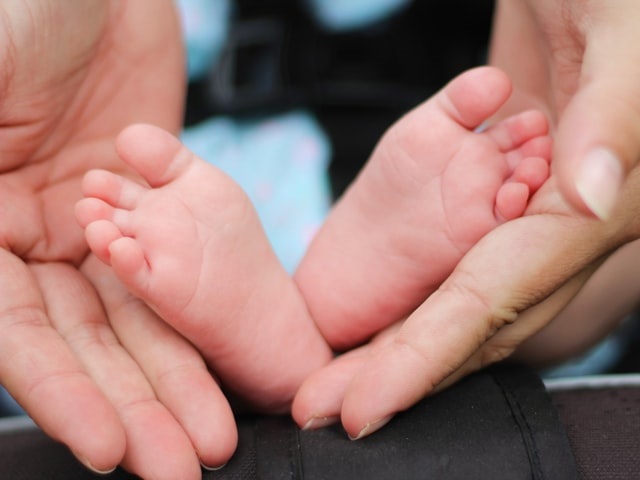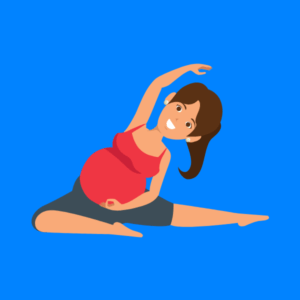Umbilical cord care
Immediately after birth, the midwife will clamp your baby’s umbilical cord with a plastic clip, close to the belly button. The midwife will then cut the cord – or your birth partner may like to do this – leaving a small part, with the with the clamp attached.
The cord should naturally take a week to two to dry out and fallout. Keep it clean and dry until it does. If you notice any bleeding or discharge, tell your midwife or Doctor immediately.
When the stump falls off the belly button will look a little raw but should heal completely within a further 7 to 10 days. It is best to keep an eye on the stump and treat the area gently while it heals to make sure everything is healing nicely and there isn’t any infection.
Read the following tips to help when caring for the cord
- Wash your hands before and after touching the cord.
- keep the belly button area as dry as possible and expose the stump to little air as often as you can. You can fold down the front of your baby’s nappy so you don’t cover. Make sure the nappy is not covering the cord.
- Keep the area clean. Clean around the base of the cord if needed with cotton wool and cool boiled water. It’s important to keep the area clean to prevent infection.
- Don’t pull the stump off or pick at it, even if it’s only hanging on by a thread. Let it fall off on its own!
Don’t panic if you see little blood around the stump. It‘s normal for there to be a little blood near the stump while it heals and when it falls off, it can bleed a bit (like a scab). At the same time, look out for any signs of an infection as it can spread quickly
Signs of an infected umbilical cord include: a smelly discharge or pus from the stump that might look a yellow color. The skin around it may also look red and swollen and may be tender.
If you see any of these signs, contact your midwife or GP for advice.
Reflexes and senses
Babies are born already knowing how to suck. During the first few days they learn to co-ordinate their sucking with their breathing during feeding.
They automatically turn towards a nipple or teat if it’s brushed against their cheek, and they’ll open their mouths if their upper lip is stroked.
Your baby can grasp your finger with their hands and toes. All these reflexes, except sucking, disappear within a few months.
Senses
Newborn babies can use all their senses. They look at people and objects, especially if they’re near, and particularly at people’s faces.
They may be startled by bright lights or loud noises and also recognise their parents’ unique smells and voices soon after birth.
Feeding
The ideal way recommended to feed your newborn is baby-led feeding which means you are feeding on demand by responding to his/her hunger cues. It will go on like this till they eventually they will require less feeds and settle into a pattern.
Your baby will provide you with feeding cues to let you know that he or she is getting hungry. Look for signs like baby turning the head towards the breast or trying to suck onto your finger, bringing the hand to the mouth, opening the mouth as if to latch on, sticking the tongue out, chin or nose.
Crying is often the last cue and shows your baby is very hungry. So if you pick up the early feeding signs your baby probably won’t need to cry.
Crying
Crying is your baby’s way of communicating their needs. It’s natural, but learning to recognise what your baby is trying to tell you isn’t always easy. You may not be able to tell why your baby is crying and it could be quite frustrating for you.
Some babies cry more than others, some at other times so do not panic if your baby cries a lot, as long as you know there’s nothing bothering him/her. If you are concerned about your baby’s crying or if your baby is crying excessively, contact your midwife or Doctor.
Reasons why your baby may be crying:
- Uncomfortable – might be due to uncomfortable clothing or dirty nappy.
- Hungry – you may notice them rooting, smacking their lips or putting a fist to their mouth.
- Too hot/cold – Babies should be dressed as warmly as possible when in hot weather. Don’t assume because he/she is a baby, you overdress for him/her!.
- Unwell – Most babies who cry aren’t unwell, but it’s something for you to be aware of.
- They may just be tired or overstimulated by activities going on around them.
- Colic -typical of new born babies to have. no-one actually knows what causes it. Some doctors think it’s a type of stomach cramp, which is why you might notice your baby draw her knees up to her tummy or arch her back.
Tips on soothing newborn cry
- If uncomfortable, change nappy and make sure their clothes are not uncomfortable.
- If hungry, offer a feed.
- If your baby seems tired and overstimulated, try moving to a quiet, place. Peaceful surroundings may eventually settle them to sleep.
- If you have fed and changed your baby and they are still crying, they may just want to be held or rocked,
- You can talk or sing to your baby or the sound of the radio, vacuum cleaner or washing machine can be a distraction which may settle them.
- You can try a warm bath. It helps some babies calm down.
Sleeping
The average newborn sleeps for 16 to 20 hours a day. But not all at once. They also have no idea whether it is night or day so they don’t sleep throughout the night. But because they have a small stomach, they must wake every few hours to eat.
The early weeks are the toughest and it could take up to three months before your baby settles into a sleeping pattern at night (though all babies are different). So expect some sleepless nights till then!
You can also start encouraging the habit of sleeping through the night if you want your baby to.
Bathing
Experts have said there’s no need to bathe your baby everyday. Instead you may prefer to use a soft wash cloth wash their face, neck, hands and bottom carefully instead. This is called “topping and tailing”. However if your baby likes bathing, you can bath them once a day.
Get everything ready before taking baby’s clothes off. Make sure the room is warm. It’s best to bathe baby when they are probably awake and not straight after a feed or when hungry or tired.
- The water should be warm, not hot. Check it with your wrist or elbow and mix it well so there are no hot patches. Water temperature should be between 37-38 degrees C.
- Hold your baby on your knee and clean their face. be careful not to put anything in nose or ears.
- Next, wash their hair with plain water, supporting them over the bowl.
- Once you’ve dried their hair gently, you can take off their nappy, wiping away any mess.
- Lower your baby gently into the bowl or bath using one hand to hold their upper arm and support their head and shoulders.
- Use as little soap as possible though just plain water is best for your baby’s skin in the first month.
- Hold your baby’s head in one palm gently but firmly and then use the other hand to gently swish the water over your baby without splashing.
- Gently wash your baby’s genitals and bottom last, using water only. Also clean out any bits of poo or vomit from his body creases.
- Once done, wrap your baby in a soft towel and pat dry. Focus on areas like armpits, groin, under the chin, around the neck and behind the ear
- Never leave your baby alone in the bath, not even for a split second.
- You can massage your baby as well as this is the best time to do so.



